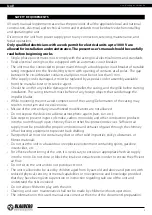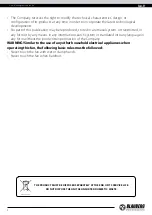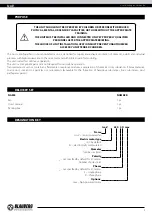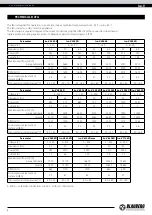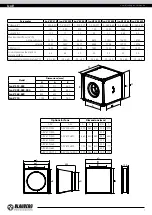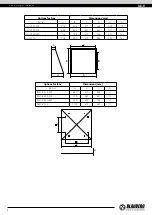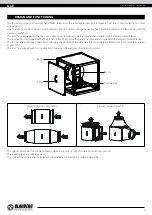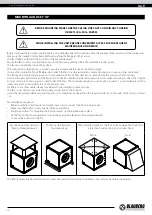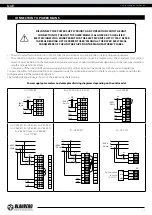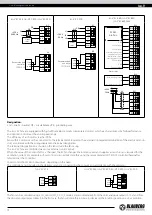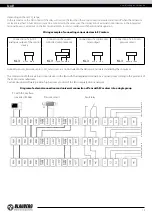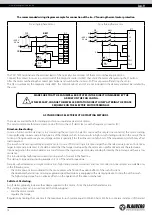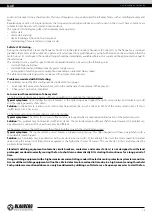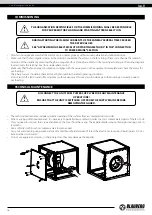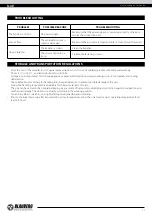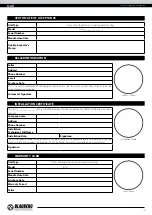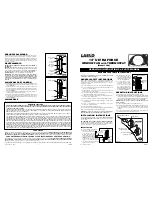
COMMISSIONING
THE ORGANISATION RESPONSIBLE FOR THE COMMISSIONING SHALL BE RESPONSIBLE
FOR PROPER MOTOR PHASING AND STARTING PATTERN SELECTION.
• After fan starting make sure that the electric motor rotates properly without undue vibration and abnormal noise.
• Make sure that the fan impeller rotates in the direction marked by the arrow on the fan casing. If necessary, change the rotation
direction of the impeller by reversing the phase sequence (for a three-phase motor) or by rewiring according to the wiring diagram
located inside the terminal box (for a single-phase motor).
• Make sure that the fan energy consumption complies with the value given on the equipment nameplate and check the motor for
overheating.
• The phase current should be checked once the fan reaches the rated operating conditions.
• Do not switch the fan on and off several times without pauses as this may result in damage to the winding or insulation due to
overheating.
DURING STARTING THE IN-RUSH CURRENTS OF THE FAN MAY SEVERAL TIMES EXCEED
THE RATED VALUES.
SEE “ASYNCHRONOUS ELECTRIC MOTOR STARTING METHODS” IN THE “CONNECTION
TO POWER MAINS” SECTION
TECHNICAL MAINTENANCE
DISCONNECT THE UNIT FROM POWER SUPPLY BEFORE ANY MAINTENANCE
OPERATIONS!
ENSURE THAT THE UNIT IS SWITCHED OFF FROM THE SUPPLY MAINS BEFORE
REMOVING THE GUARD.
• The technical maintenance includes periodic cleaning of the surfaces from accumulated dust and dirt.
• When carrying out fan maintenance, it is necessary to partially disassemble it in order to access contaminated parts of the fan. To do
this, you need to unscrew the screws and remove the cover from the casing. The impeller blades require thorough cleaning once in
6 months.
• Use a soft dry cloth, brush or compressed air to remove dust.
• Carry out wet cleaning using warm water and a mild household detergent. Protect the electric motor against liquid ingress. Do not
immerse the unit in water!
• Do not use aggressive solvents, or sharp objects as they may damage the impeller.
www.blaubergventilatoren.de
iso-V
16


